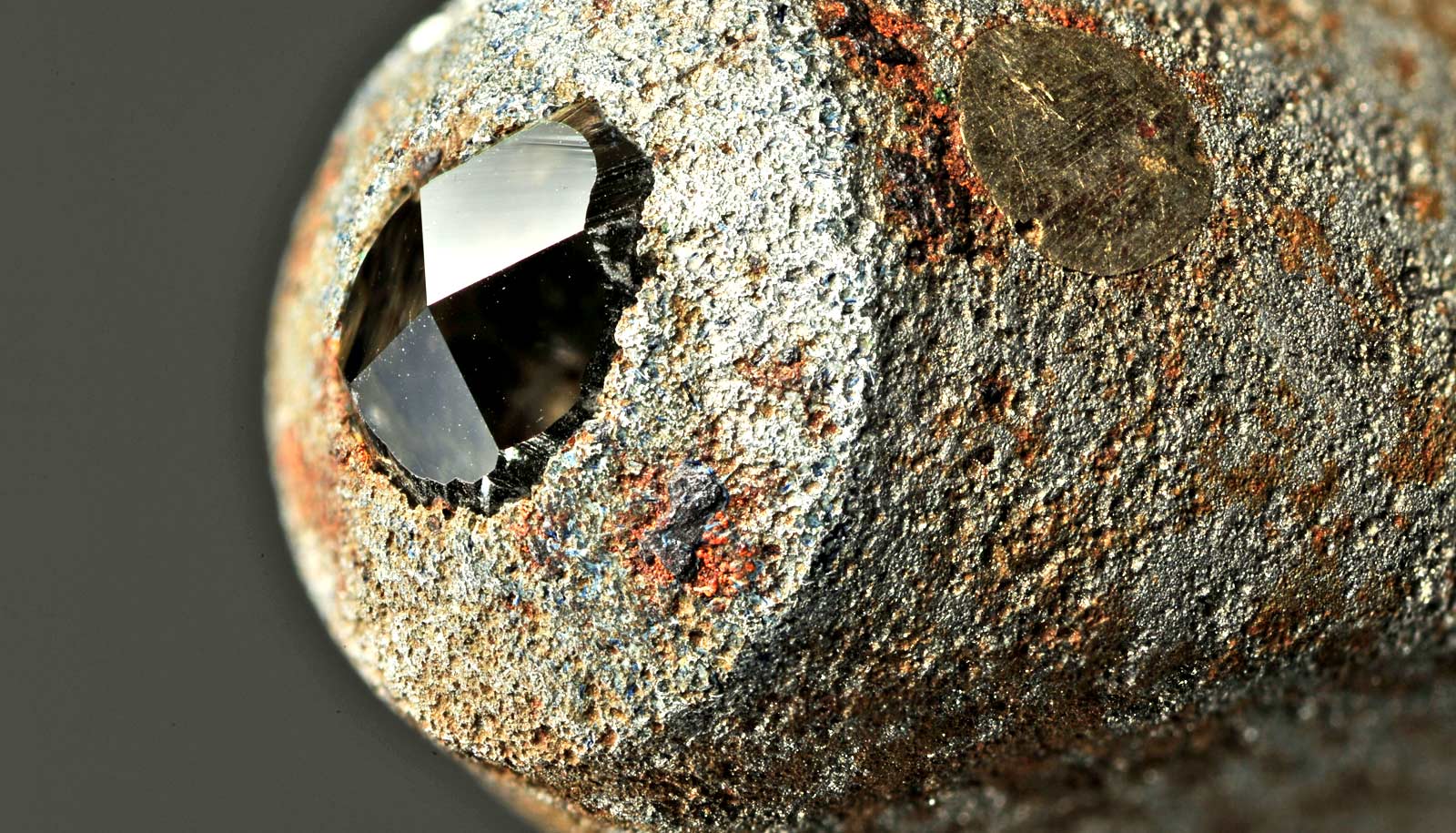New research may explain how “buckyballs”—complex carbon molecules with a soccer-ball-like structure—form in space.
Carbon 60, or C60 for short, (the official name is Buckminsterfullerene) comes in spherical molecules consisting of 60 carbon atoms organized in five-membered and six-membered rings. The name “buckyball” derives from their resemblance to the architectural work of Richard Buckminster Fuller, who designed many dome structures that look similar to C60. Their formation was thought to only be possible in lab settings until their detection in space challenged this assumption.
The existence of buckyballs in space has long puzzled scientists. For decades, people thought interstellar space was sprinkled with lightweight molecules only: mostly single atoms, two-atom molecules, and the occasional nine or 10-atom molecules. This was until researchers detected massive C60 and C70 molecules a few years ago.

Researchers were also surprised to find that that they were composed of pure carbon. In the lab, researchers blast together pure carbon sources, such as graphite to make C60. In space, they detected C60 in planetary nebulae, which are the debris of dying stars. This environment has about 10,000 hydrogen molecules for every carbon molecule.
“Any hydrogen should destroy fullerene synthesis,” says lead author Jacob Bernal, a doctoral student in astrobiology and chemistry at the University of Arizona. “If you have a box of balls, and for every 10,000 hydrogen balls you have one carbon, and you keep shaking them, how likely is it that you get 60 carbons to stick together? It’s very unlikely.”
Spacey simulations
Bernal and his coauthors began investigating the C60 mechanism after realizing that the transmission electron microscope, or TEM, at the University of Arizona could simulate the planetary nebula environment fairly well.
The TEM has a serial number of “1” because it is the first of its kind in the world with its exact configuration. Its 200,000-volt electron beam can probe matter down to 78 picometers—scales too small for the human brain to comprehend—in order to see individual atoms. It operates under a vacuum with extremely low pressures. This pressure, or lack thereof, in the TEM is very close to the pressure in circumstellar environments.
“It’s not that we necessarily tailored the instrument to have these specific kinds of pressures,” says coauthor Tom Zega, associate professor in the Lunar and Planetary Lab. “These instruments operate at those kinds of very low pressures not because we want them to be like stars, but because molecules of the atmosphere get in the way when you’re trying to do high-resolution imaging with electron microscopes.”

The team partnered with the US Department of Energy’s Argonne National Lab, near Chicago, which has a TEM capable of studying radiation responses of materials. They placed silicon carbide, a common form of dust made in stars, in the low-pressure environment of the TEM, subjected it to temperatures up to 1,830 degrees Fahrenheit, and irradiated it with high-energy xenon ions.
Then, they brought it back to Tucson for researchers to utilize the higher resolution and better analytical capabilities of the University of Arizona TEM. They knew they could validate their hypothesis if they observed the silicon shedding and exposing pure carbon.
The stellar origins of buckyballs
“Sure enough, the silicon came off, and you were left with layers of carbon in six-membered ring sets called graphite,” says coauthor Lucy Ziurys, professor of astronomy, chemistry, and biochemistry. “And then when the grains had an uneven surface, five-membered and six-membered rings formed and made spherical structures matching the diameter of C60. So, we think we’re seeing C60.”
This work suggests that C60 is derived from the silicon carbide dust made by dying stars, which then gets hit by high temperatures, shockwaves, and high energy particles , leeching silicon from the surface and leaving carbon behind. These big molecules dispersed because dying stars eject their material into the interstellar medium—the spaces in between stars—thus accounting for their presence outside of planetary nebulae. Buckyballs are very stable to radiation, allowing them to survive for billions of years if shielded from the harsh environment of space.
“The conditions in the universe where we would expect complex things to be destroyed are actually the conditions that create them,” Bernal says, adding that the implications of the findings are endless.
“If this mechanism is forming C60, it’s probably forming all kinds of carbon nanostructures,” Ziurys says. “And if you read the chemical literature, these are all thought to be synthetic materials only made in the lab, and yet, interstellar space seems to be making them naturally.”
If the findings are any sign, it appears that there is more the universe has to tell us about how chemistry truly works.
The research appears in the Astrophysical Journal Letters.
Support for the work came from the National Science Foundation, the National Institutes of Health, the US Department of Energy, and the Sloan Foundation Baseline Scholars Program. The National Science Foundation and NASA fund the Arizona TEM.
Source: University of Arizona



